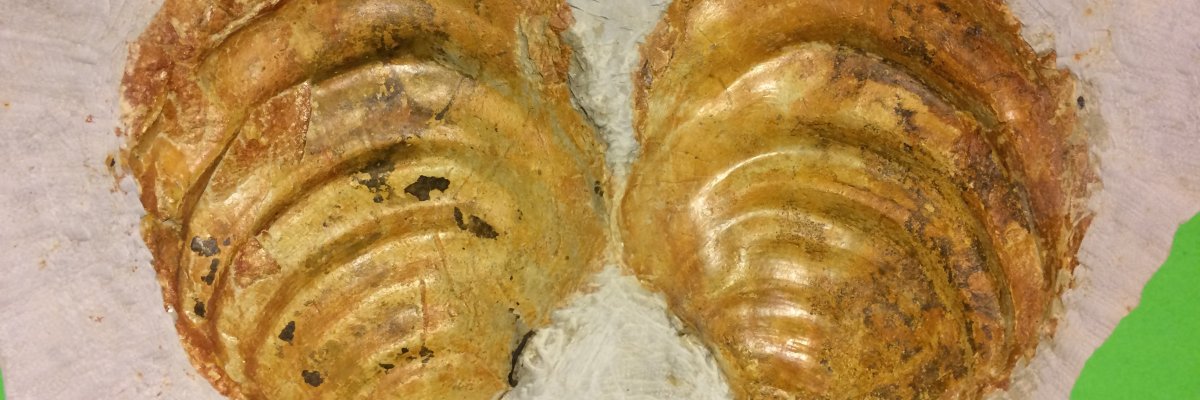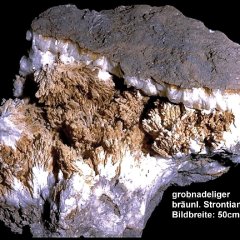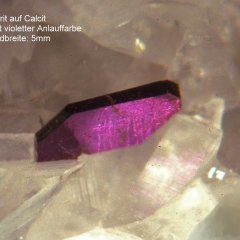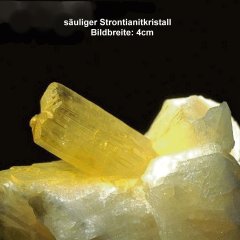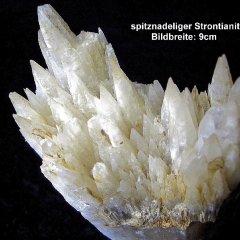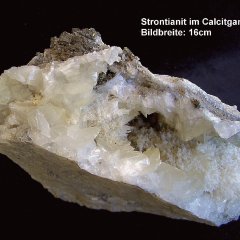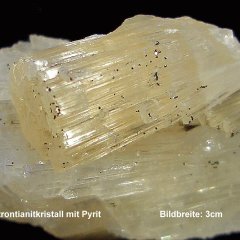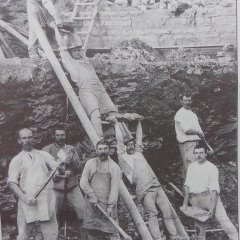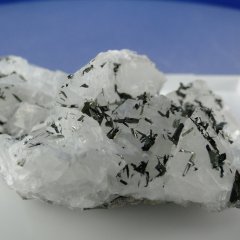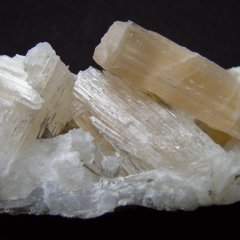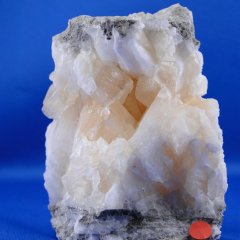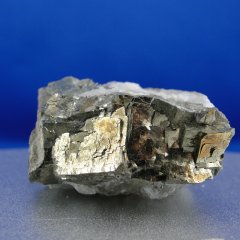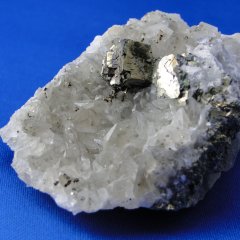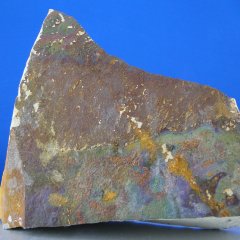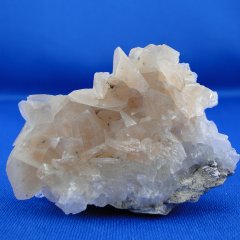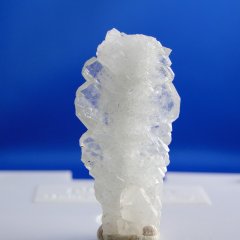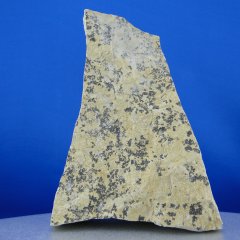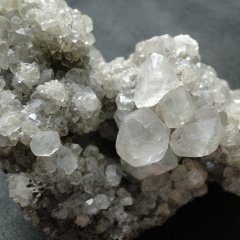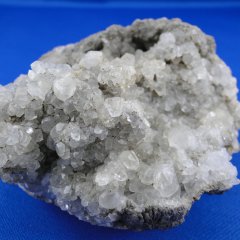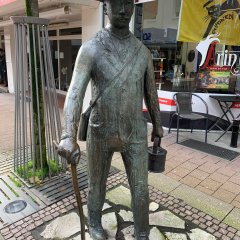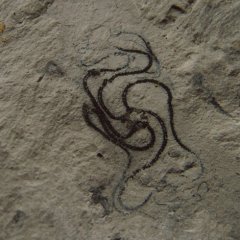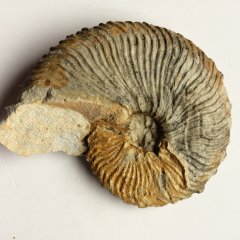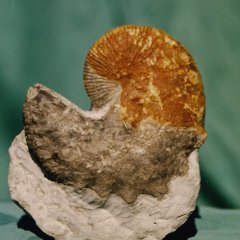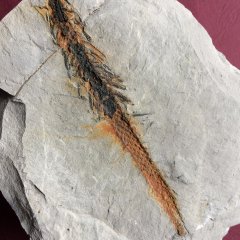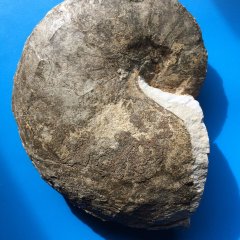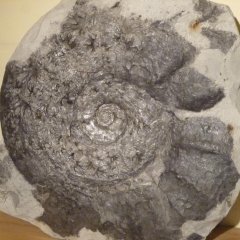Witnesses of prehistory
Around 80 million years ago, the Münsterland region was part of a large sea. The limestone layers exposed in the quarries around Beckum are sedimentary deposits from this sea. The layers consist of an alternating sequence of clayey marls, marly limestones and marly limestones.
Minerals
Text by Georg Olbrich, Beckum
What minerals can be found here? The possibilities for finding minerals in the Beckum quarries are closely linked to the mining activities. Many beautiful minerals can be found when fissures are opened up. Fissures are created by the displacement of rock plates (plate tectonics) or by earthquakes. In the resulting fissures and cracks, a) hydrothermal, i.e. rising hot water with dissolved minerals penetrates and crystallises over long periods of time, or b) from above by rainwater, which dissolves minerals from the adjacent rocks on its way down and thus provides the nuclei for the growth of crystals. Which of the two theories is correct has not yet been clearly clarified.
In my 50 years of collecting, I have been able to identify 7 different types of minerals to date:
1. Calcite (calcium carbonate), CaCO3
2. Strontianite (strontium carbonate), SrCO3
3. Pyrite (sulphide), FeS2
4. Marcasite (sulphide), FeS2
5. Limonite (brown iron ore hydroxide), FeOOH
6. Manganese oxide (precipitates in the form of dendrites), MnO
7. Barite (sulphate), BaSO4
These minerals occur independently, but also together with other minerals. For example, it can happen that small brass-coloured pyrite crystals grow on or in calcite crystals and snow-white, tree-like strontianite crystals sit between the calcite crystals. This meeting of different minerals on the same parent rock is called paragenesis. If such minerals are found together with the parent rock, these pieces are called mineral specimens.
A special and very rare find was made in 1985 in the Readymix quarry (now Holcim's Kollenbach plant). The mineral barite, also known as barite, was found in the north-eastern part of the quarry. The barite had grown on calcite crystals, had a tabular shape of approx. 10 mm in size and was white in colour. It was a unique find and this mineral has not been found again to this day.#
Anyone who would like to know more about this beautiful and interesting hobby can contact the "Mineral and Fossil Friends" working group of the Beckum Heritage and History Society. The group meets on the first Wednesday of every month at 6.30 pm for a discussion in the Samson restaurant in Beckum. We organise several excursions a year and invite guests to join us. Please note: Entering the quarries is generally prohibited.
You may only enter the quarries with written authorisation, in compliance with the factory regulations and wearing protective equipment. For your own safety, you should never enter the quarry alone!
Fossils
Text and pictures by Ludger Bach
In the marl and limestone layers exposed in the Beckum quarries, remains of prehistoric marine life from the Cretaceous period have also been preserved in some layers. Particularly in the upper layers of the Beckum quarry and in some places in the pre-Helm layers, partially preserved fossils can be found with diligence and a little luck. These finds represent a certain rarity compared to other sites in Germany. Above all, the visually unspectacular, straight-growing ammonites called Baculites vertebralis, which are sometimes mistaken for belemnites, come to light. These thunderbolts (rostrums of former squid) are so weather-resistant due to their hardness (calcite) that they can also be picked up from marly fields.
However, special attention should be paid to the spiral-shaped shells of the ammonites, which can come to light in the area of the local quarries up to a size of 70 cm and then entail a considerable salvage effort. However, a wide variety of species with an average diameter of 10 cm predominate.
The finds from the native stone caves, however, illustrate a far more diverse life in the once subtropical sea. In addition to extremely rare fish finds, various mussels, snails, nautilids, sponges, sea urchins and filigree brittle stars came to light. Another unusual find is the cone of a conifer, as we are dealing with marine sediments here. This part of a land plant was probably washed into this area with submarine mud flows from the southern coastal strip.
These finds also show how exciting excursions to the quarries around Beckum can be, which are also offered by the working group of the local history and heritage association thanks to the help of the local cement industry.
Further information can be found on Ludger Bach's private website:
https://bach-fossilien.jimdofree.com
Further information on the private websites:
(Note: By clicking on the links you leave the pages of the city of Beckum)
